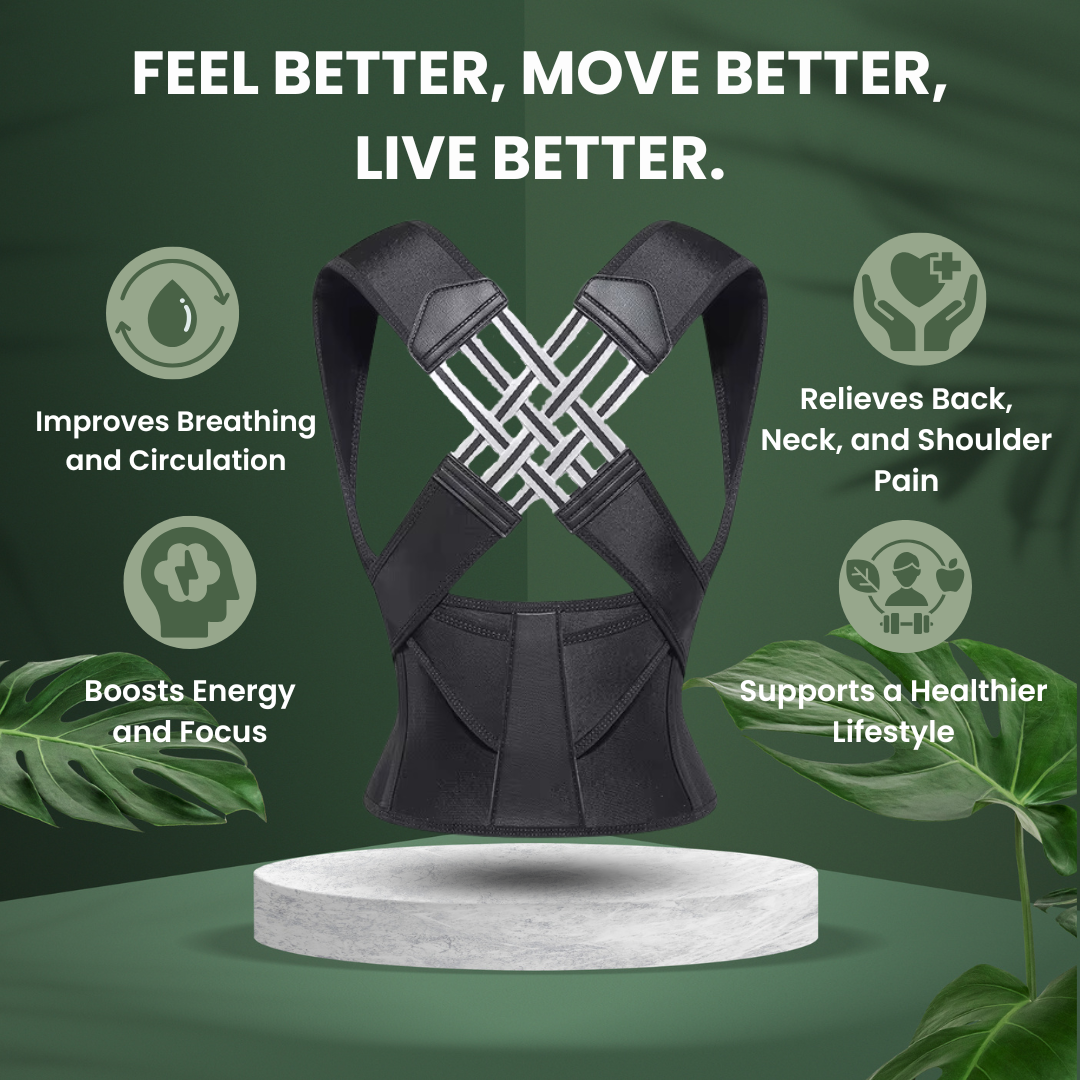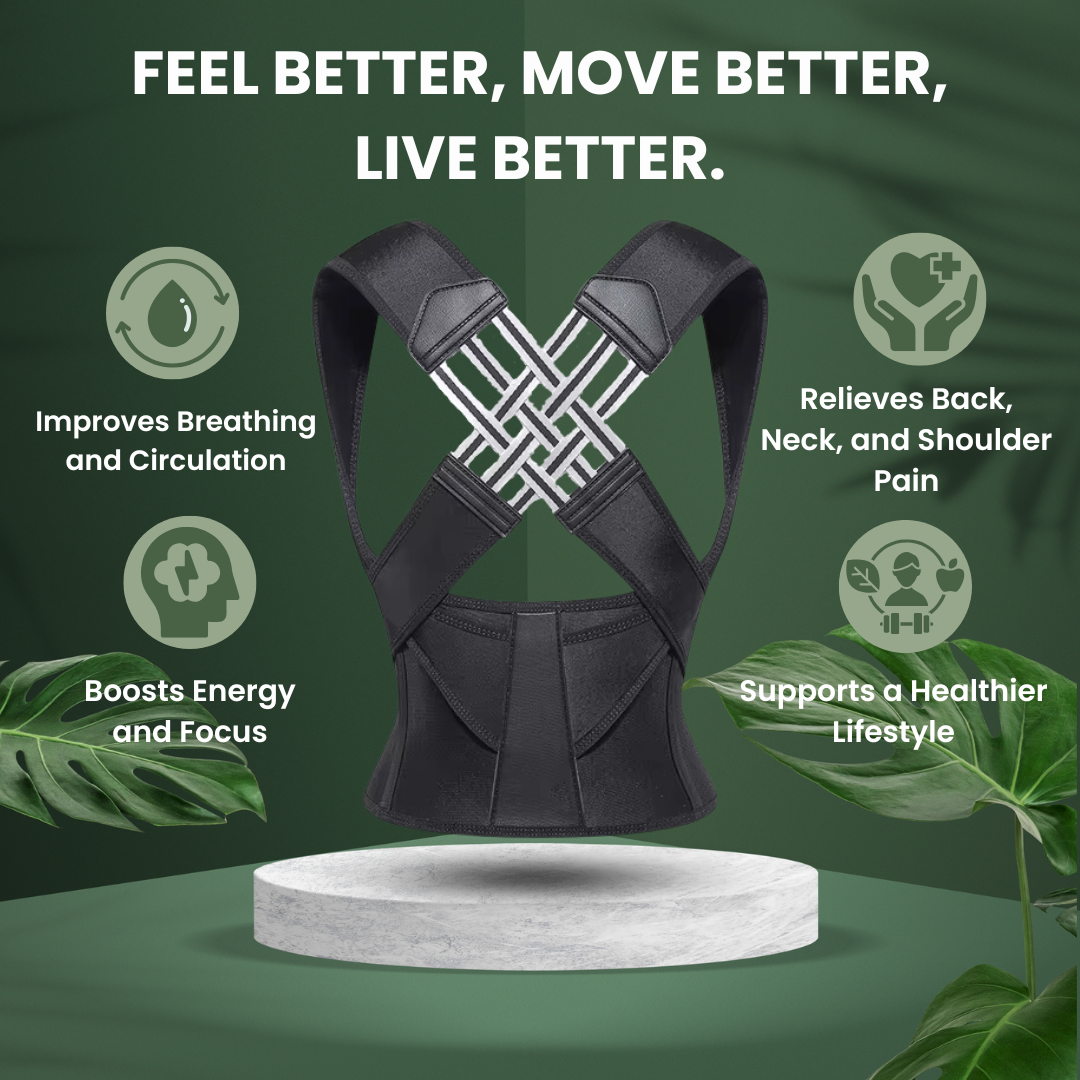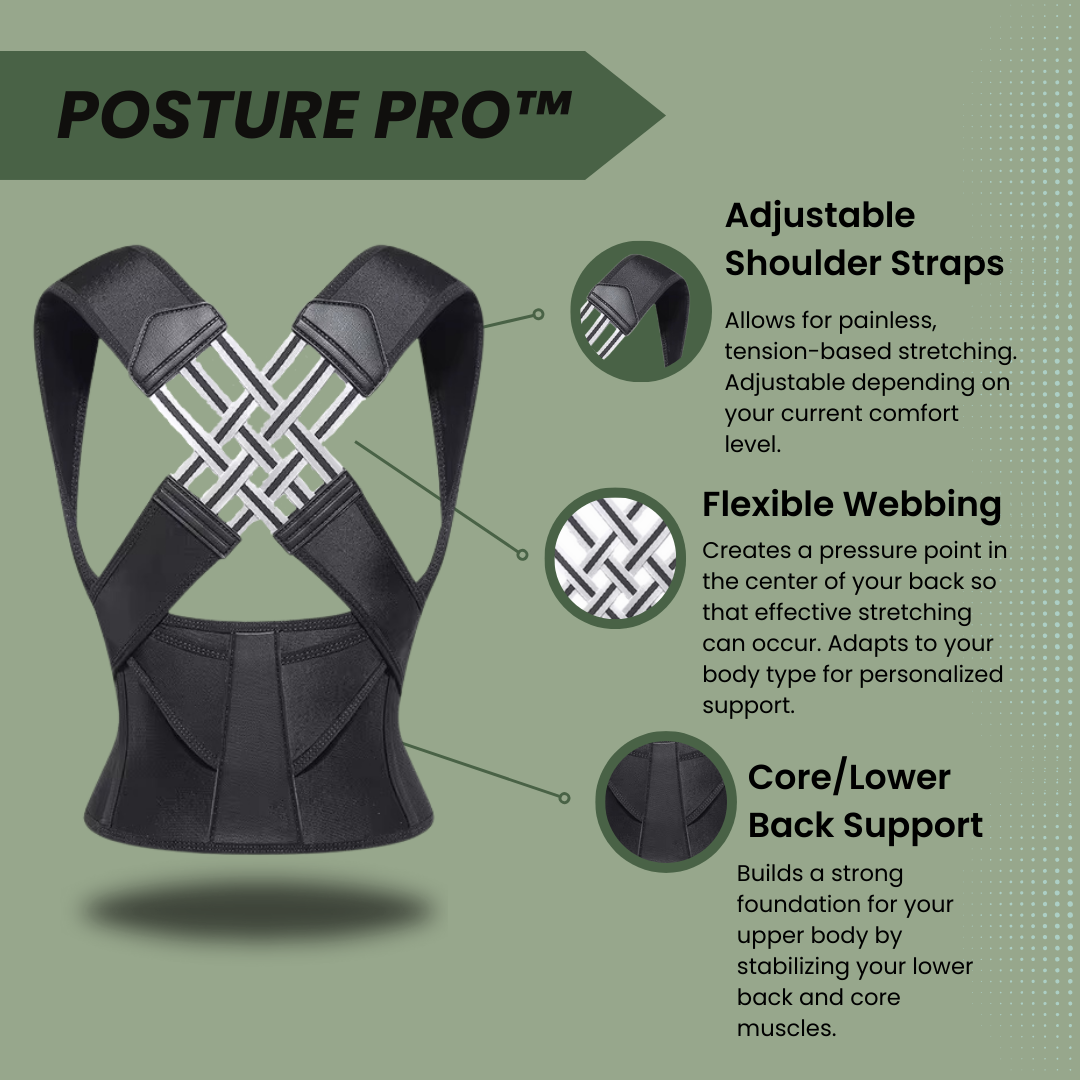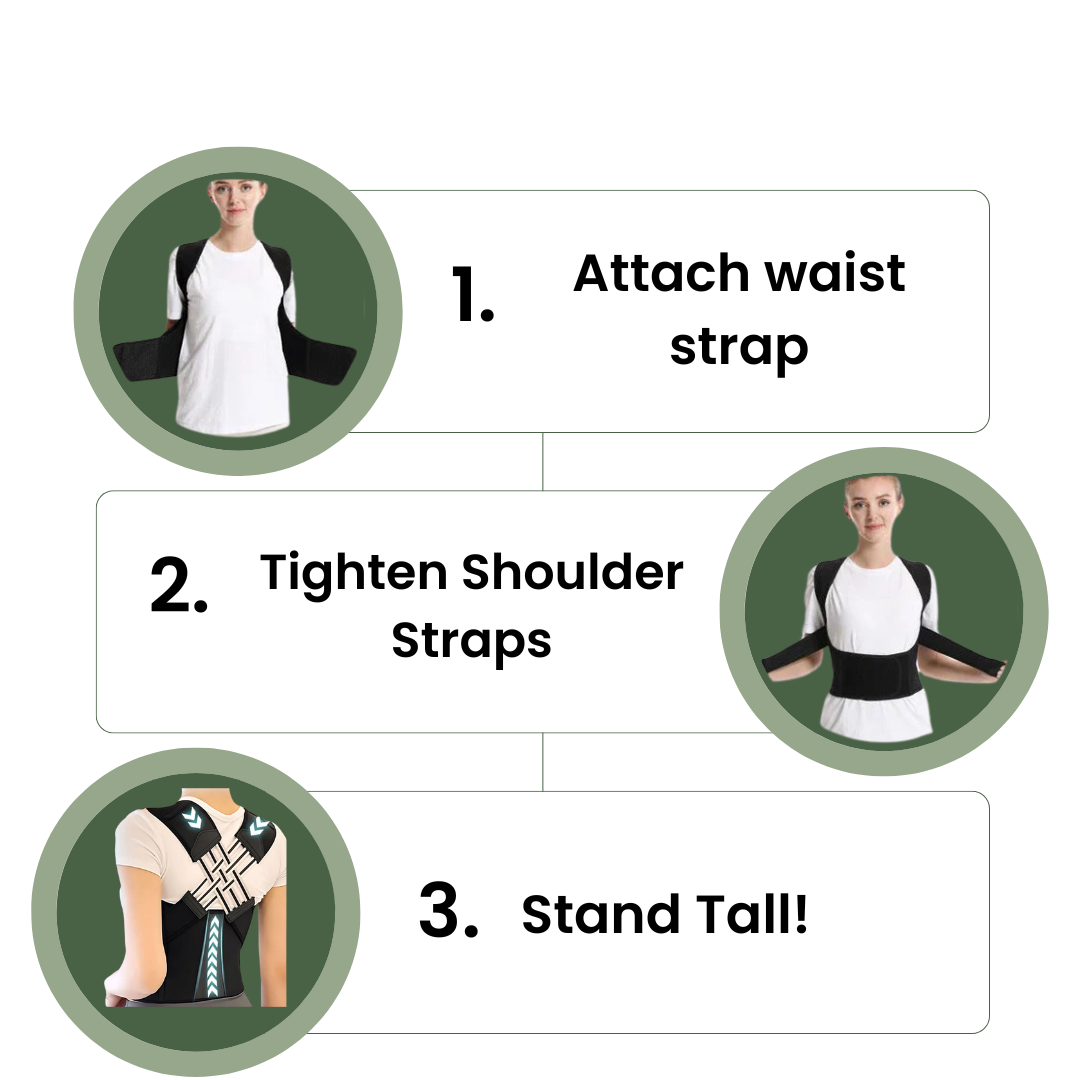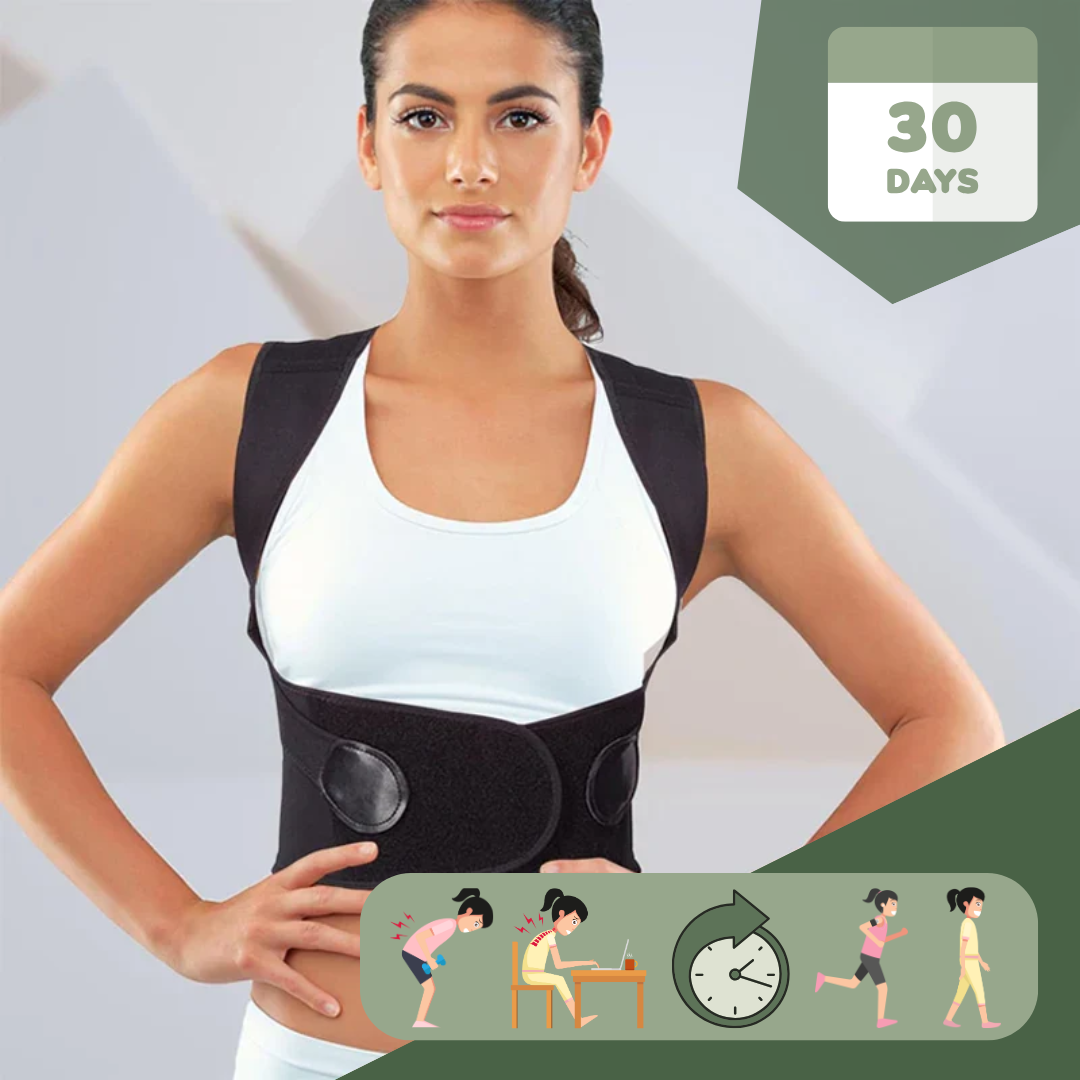Many people wonder why they have back pain or feel tired all day. One reason could be poor posture. This article will show you how to assess your posture and improve it. Keep reading to find out how!
Key Takeaways
- You can assess your posture through simple tests like the Wall Test, Palm Test, Laying Test, and Chair Test. These help identify any misalignments.
- Good posture has many benefits including preventing muscle strain, enhancing appearance, reducing injury risk, and improving overall health. Poor posture can lead to chronic pain and decreased mobility.
- Improving your posture involves exercises that strengthen and stretch key muscles. Examples include wall angels, chest stretches, shoulder blade squeezes, neck stretches, planks, and seated torso twists.
- Regular movement is essential for maintaining good postural alignment. It helps distribute body weight evenly and prevents stiffness from prolonged sitting or standing.
- Incorporating daily habits to correct bad posture contributes to better musculoskeletal health over time.
Why Good Posture Matters
Good posture boosts your overall health and well-being. It enhances your appearance and helps prevent discomfort or injury.
Effects of Bad Posture
Bad posture can cause numerous health issues. Misalignment in the spine leads to muscle strain and tension. This often results in discomfort in the back, neck, and shoulders. Over time, poor positioning disrupts body alignment.
Many people experience headaches due to tight muscles from slouching or hunching over devices.
Poor posture can affect overall body function as well. The body's weight becomes unevenly distributed, increasing stress on certain muscles and joints. These imbalances may lead to chronic pain and decreased mobility.
Evaluating posture regularly helps identify problems early on. Addressing these issues prevents long-term musculoskeletal health risks while improving spinal alignment for better balance and stability.
Benefits of Good Posture
Good posture offers numerous advantages. It helps keep your body aligned, preventing muscle strain and tension. Proper alignment distributes body weight evenly. This function reduces the risk of discomfort and injury.
Good posture supports spinal health, enhancing overall body function. Maintaining correct posture benefits you whether standing, sitting, or lying down.
Improving posture also boosts confidence. Standing tall can create a positive impression in social and professional settings. You will feel more energetic throughout the day with good postural alignment.
Regularly assessing your posture leads to better body positioning habits over time. Consider incorporating simple exercises aimed at correcting slouching and avoiding poor posture habits for lasting results in back health.
How to Assess Your Posture

To assess your posture effectively, perform a few simple tests. These tests will help you identify any misalignments and improve your body alignment.
The Wall Test
The Wall Test helps you evaluate your standing posture. This simple method allows you to check for proper spinal alignment.
- Stand with your back against a flat wall. Keep your heels about six inches away from the wall.
- Your head, shoulders, and buttocks should touch the wall. Ensure your ears align with your shoulders.
- Check if there is a gap between your lower back and the wall. A healthy spine maintains its natural curves without excessive arching.
- Observe where your feet are positioned. They should be shoulder-width apart, pointing straight ahead.
- Relax your arms at your sides while keeping them slightly away from the wall. Your wrists should not touch the surface.
- Assess if you feel comfortable in this position over time. Good posture should not cause strain or discomfort.
- Take note of any misalignments in this position, such as slumping or leaning forward.
- Repeat this test several times to gauge consistency in alignment and comfort level.
This posture evaluation helps identify issues that may affect body alignment and overall well-being. Use it regularly to maintain good posture and prevent muscle strain or tension throughout daily life activities.
The Palm Test
The Palm Test helps identify posture issues by assessing body alignment. This simple evaluation provides insight into how well your spine maintains its natural curves.
- Stand against a wall with your back straight. Your heels should touch the wall, and your head must be level.
- Place one palm vertically between the wall and your lower back. The space should fit comfortably without excessive pressure.
- Check if both of your shoulder blades touch the wall. They must make contact for an aligned posture.
- Look at your neck position. Your head should remain neutral, not tilted forward or backward.
- Observe how you feel while performing this test. Any discomfort indicates misalignment in your posture.
- Repeat this test regularly to track improvements in body alignment over time.
- Use this information to work on correcting posture through exercises that strengthen muscles supporting the spine.
- Include daily movement to maintain good posture throughout various activities like sitting or standing.
- Incorporate findings from the Palm Test into a broader postural assessment for thorough evaluation and improvement strategies.
- Consistent practice can lead to better spinal alignment and overall musculoskeletal health.
The Laying Test
Assessing your posture while lying down helps identify misalignments in the spine. This test can reveal critical insights into your overall alignment.
- Find a flat surface. Lie on your back. Keep your arms relaxed at your sides and legs straight.
- Observe the natural curves of your spine. Your neck and lower back should have slight curves without significant gaps.
- Check for symmetry in body parts. Look at your shoulders, hips, and feet while lying down.
- Feel for discomfort or tension areas. These could indicate posture issues that need correction.
- Place a small towel under your neck for support if needed. This ensures proper alignment of the cervical spine.
- Record any observations you notice about imbalances or unusual positions during the test.
- Consider repeating this test regularly to monitor changes over time.
- Use findings from this assessment to explore corrective exercises aimed at improving posture improvement and spinal alignment.
This method plays a vital role in identifying posture issues and finding the right posture for overall health benefits.
The Chair Test
The Chair Test effectively evaluates your sitting posture. Good sitting posture plays a critical role in maintaining proper spinal alignment.
- Sit comfortably in a chair with your feet flat on the ground. Ensure your knees are at or slightly below hip level.
- Your back should touch the back of the chair for support. Keep your shoulders relaxed and aligned over your hips.
- Adjust the chair height to maintain an angle of about 90 degrees at your knees and elbows. Your forearms should rest parallel to the floor.
- Place any frequently used items within easy reach. Avoid leaning forward or twisting to grab them, as this can lead to muscle strain.
- Check that your head sits directly above your spine, not jutting forward. This prevents neck tension and promotes better spinal health.
- Consider using lumbar support if necessary. This helps maintain the natural curve of your low back while seated.
- Regularly shift your weight from one side to another during prolonged sitting periods. Movement prevents stiffness and promotes circulation.
- Take breaks every 30 minutes to stand or stretch. These actions contribute to overall body function and reduce discomfort from poor posture.
- Ergonomics matter in creating an optimal workspace setup for long hours of sitting, allowing effective posture maintenance.
Effective posture assessment includes evaluating sitting posture using these simple techniques from the Chair Test for optimal body function and maintaining good posture throughout daily life activities.
Ways to Improve Your Posture
You can enhance your posture through simple exercises that promote strength and flexibility in key muscle groups. Explore how regular movement plays a crucial role in maintaining proper alignment.
For detailed techniques, continue reading this section for practical tips and insights.
Simple exercises to correct posture
Good posture keeps your body aligned. It helps prevent muscle strain and tension. Here are some simple exercises to correct posture:
- Wall Angels: Stand with your back against a wall. Keep your feet slightly away from the wall and press your lower back flat against it. Move your arms up and down like an angel while keeping them in contact with the wall.
- Chest Stretch: Stand tall and clasp your hands behind your back. Straighten your arms and pull them away from your body to open up your chest. Hold this position for 15-30 seconds.
- Shoulder Blade Squeeze: Sit or stand upright. Pull your shoulder blades together as if you want to hold a pencil between them. Hold for five seconds, then release.
- Neck Stretches: Gently tilt your head toward one shoulder until you feel a stretch in the opposite side of your neck. Hold for 15-30 seconds before switching sides.
- Cat-Cow Stretch: Start on all fours in a tabletop position. Arch your back upward like a cat, tucking in your chin to chest, then lower it into the cow position by lifting your head and tailbone while dropping the belly towards the floor.
- Seated Torso Twist: Sit tall in a chair with feet flat on the ground. Rotate your torso to one side while keeping both hips grounded in the chair, and hold for 15-30 seconds before switching sides.
- Plank Exercise: Lay face down on the floor and lift yourself up on forearms and toes, keeping a straight line from head to heels for 20-60 seconds.
- Bridge Pose: Lie on your back with knees bent and feet flat on the ground hip-width apart. Lift your hips toward the ceiling while squeezing glutes, then lower back down slowly.
- Side Plank: Lie on one side with legs straight stacked on top of each other, supporting yourself on one forearm while lifting hips off the ground, holding this position for 15-30 seconds before switching sides.
- Standing Forward Bend: Stand upright, inhale deeply, then fold forward at the hips while exhaling, letting upper body hang heavy towards the ground without locking knees—hold this stretch for several breaths.
These exercises can play an important role in posture correction techniques that enhance spinal alignment for overall wellness.
Strengthening and stretching exercises
Strengthening and stretching exercises play a significant role in improving postural alignment. These activities help keep your spine aligned and reduce muscle strain.
- Perform core strengthening exercises like planks. A strong core supports your spine's natural curves, helping maintain good posture.
- Incorporate back extensions into your routine. These exercises strengthen muscles around the mid-back, promoting better spinal alignment.
- Practice shoulder blade squeezes regularly. This exercise improves upper back strength and counteracts slouching.
- Use resistance bands for external rotations. This movement strengthens shoulder muscles, which aids in proper posture during sitting or standing.
- Include stretches for your chest and shoulders. Stretching these areas releases tension that can contribute to poor posture.
- Engage in yoga or Pilates classes often. Both practices emphasize body awareness and alignment, directly benefiting your posture.
- Apply wall stretches to improve flexibility in the upper body. Place your arms against a wall, lean forward slightly, and feel the stretch across your chest.
- Focus on hamstring stretches to alleviate lower back tightness. Tight hamstrings can pull on the pelvis, leading to misalignment of the spine.
- Add balance exercises like single-leg stands or tai chi to your routine. Balance training enhances overall stability and promotes symmetrical alignment of the body.
- Ensure regular movement throughout the day by taking breaks from prolonged sitting or standing positions. Frequent movement prevents stiffness that negatively affects posture.
These strengthening and stretching exercises encourage optimal body function while preventing issues related to musculoskeletal health.
Importance of movement
Movement plays a crucial role in maintaining good posture. It promotes the natural curves of your spine at the neck, mid back, and low back. Regular movement helps distribute body weight evenly.
This prevents muscle strain and tension over time. Incorporating simple exercises into your routine can enhance postural alignment.
Sitting or standing still for long periods can lead to misalignments. Engaging in daily activities encourages healthy habits that support spinal alignment. Good posture is vital whether you are seated or lying down.
Physical therapy often includes movement techniques to correct bad posture. Overall, staying active significantly contributes to optimal body function.
Conclusion
Good posture supports your overall well-being. It keeps your body aligned and prevents muscle strain. Use the tests outlined in this guide to check your posture regularly. Make small changes each day for lasting improvement.
Start today and feel the difference in how you move and feel!
FAQs
1. How can I assess my posture using this guide?
The guide offers step-by-step procedures, advice, and tips on how to evaluate your standing or sitting posture effectively.
2. Can this guide help improve my current posture?
Yes, it's designed not only for assessing but also for enhancing postural alignment with practical strategies included within.
3. Is checking spinal alignment crucial in assessing posture?
Absolutely! Spinal alignment is a vital aspect of overall body posture; thus its assessment is integral in any effective postural evaluation.



